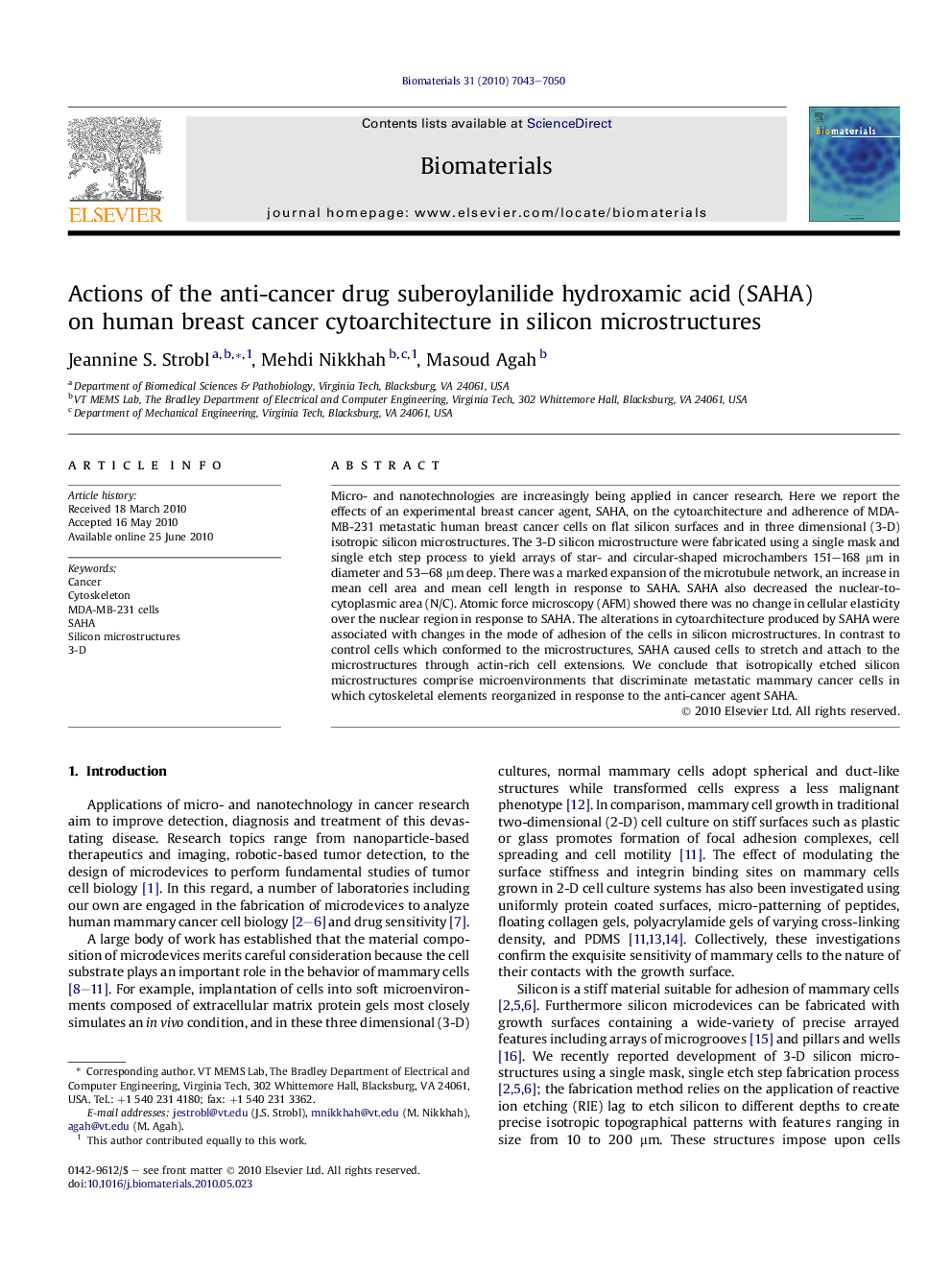| Article ID | Journal | Published Year | Pages | File Type |
|---|---|---|---|---|
| 8348 | Biomaterials | 2010 | 8 Pages |
Micro- and nanotechnologies are increasingly being applied in cancer research. Here we report the effects of an experimental breast cancer agent, SAHA, on the cytoarchitecture and adherence of MDA-MB-231 metastatic human breast cancer cells on flat silicon surfaces and in three dimensional (3-D) isotropic silicon microstructures. The 3-D silicon microstructure were fabricated using a single mask and single etch step process to yield arrays of star- and circular-shaped microchambers 151–168 μm in diameter and 53–68 μm deep. There was a marked expansion of the microtubule network, an increase in mean cell area and mean cell length in response to SAHA. SAHA also decreased the nuclear-to-cytoplasmic area (N/C). Atomic force microscopy (AFM) showed there was no change in cellular elasticity over the nuclear region in response to SAHA. The alterations in cytoarchitecture produced by SAHA were associated with changes in the mode of adhesion of the cells in silicon microstructures. In contrast to control cells which conformed to the microstructures, SAHA caused cells to stretch and attach to the microstructures through actin-rich cell extensions. We conclude that isotropically etched silicon microstructures comprise microenvironments that discriminate metastatic mammary cancer cells in which cytoskeletal elements reorganized in response to the anti-cancer agent SAHA.
